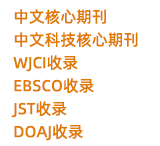



稻壳灰对水中低浓度Pb(Ⅱ)的吸附特性
唐登勇 胥瑞晨 张聪 胡洁丽 郑宁捷
稻壳灰对水中低浓度Pb(Ⅱ)的吸附特性
Adsorption Characteristics of Low Concentration Pb(Ⅱ) from Water onto Rice Husk Ash
| {{custom_ref.label}} |
{{custom_citation.content}}
{{custom_citation.annotation}}
|
/
| 〈 |
|
〉 |